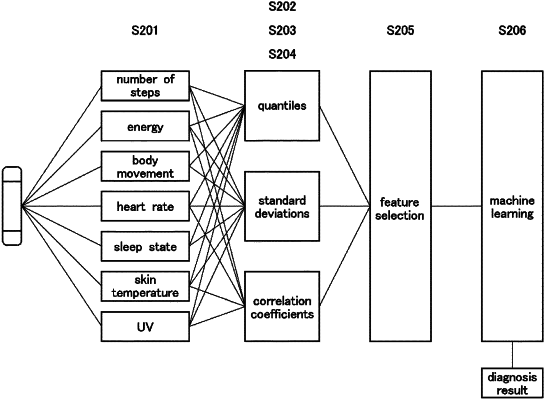| CPC G16H 50/20 (2018.01) [G06F 1/163 (2013.01); G16H 40/63 (2018.01)] | 20 Claims |

|
1. A method for operating an automated diagnostic system to predict a depressive state of a subject, the automated diagnostic system including a computer with a non-transitory computer-readable storage medium and processor, the method comprising:
receiving, by the automated diagnostic system, biological data of the subject measured by a wearable device worn by the subject, the biological data comprising a plurality of data types;
converting, by the automated diagnostic system, the biological data of each data type into unit time data in a predetermined time unit, the unit time data for each data type including a statistical representation of the biological data over a predefined period of time;
extracting, by the automated diagnostic system, a set of features from the unit time data to produce a feature vector, the set of features including a statistical distribution information of the unit time data for each data type and a correlation coefficient for each pairwise combination of the plurality of data types; and
providing, by the automated diagnostic system, the feature vector as an input to a trained prediction model and producing, by the trained prediction model, an output indicating whether the subject exhibits a depressive state, the trained prediction model being trained using a set of labeled training data which includes feature vectors corresponding to biological data of a plurality of training subjects with predetermined diagnosis states as labels indicative of the depressive state.
|